. You can find the current tutorials here.
| Archived Summer Tutorials | 2005 | 2004 | 2003 | 2002 | 2001 |
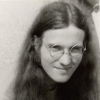 |
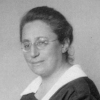 |
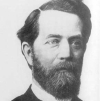 |
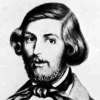 |
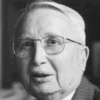 |
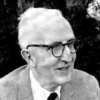 |
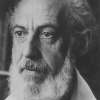 |
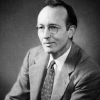 |
Welcome Message
The summer tutorial program offers some interesting mathematics to
those of you who will be in the Boston area during July and August.
Each tutorial will run for six weeks, meeting twice per week in the
evenings (so as not to interfere with day time jobs). The tutorials
will start early in July and run to mid August. The precise starting
dates and meeting times will be arranged for the convenience of the
participants once the tutorial rosters are set.
The format will be much like that of the term-time tutorials, with the
tutorial leader lecturing in the first few meetings and students
lecturing later on. Unlike the term-time tutorials, the summer
tutorials have no official Harvard status: you will not receive either
Harvard or concentration credit for them. Moreover, enrollment in the
tutorial does not qualify you for any Harvard-related perks (such as a
place to live). However, the Math Department will pay each student
participant a stipend of $700, and you can hand in your final paper
from the tutorial for you junior 5-page paper requirement.
The topics and leaders of the four tutorials this summer are:
- Category theory (Thomas Barnet-Lamb)
- Group cohomology (John Francis)
- Modular forms (Mike Hill)
- Morse Theory (Andrew Lobb)
A description of each topic is appended below. You can sign up for a
tutorial by emailing me at kronheim@math.harvard.edu. When you sign
up, please list at least one other choice in case your preferred
tutorial is either over-subscribed or under-subscribed. If you have
further questions about any given topic, contact the tutorial leader
via the email. Please contact me if you have questions about the
administration of the tutorials.
Yours,
Peter Kronheimer
Category theory (Thomas Barnet-Lamb, tbl@math.harvard.edu)
Analogies between different theories are a key driver of progress
across most of modern mathematics. Many vital new concepts are
identified by looking for concepts analogous to well-understood
concepts elsewhere. Category theory is a fundamental tool for making
these analogies. It is the systematic study of a special kind of
picture called a commutative diagram: it turns out (rather
miraculously) that many concepts can be defined using these pictures,
and (even more miraculously) that once you define something in terms
of such a picture, you can use it to translate the definition to other
areas of mathematics and this has an almost magic ability to pick out
the "right" analogous object.
The language of categories has thus become a fundamental part of the
language of modern mathematics, and is now vital in much of modern
topology and number theory. Alas, however, people tend to assume that
students will "pick up" category theory as they go along. This is a
shame, because although the category theoretic way of looking at
things is beautifully slick and clean once you "get it", it
unfortunately can seem a little bewildering at first. (The situation
is made worse by a propensity of category theory textbooks to teach
the theory in a very dry and abstract way, with little reference to
its applications to the rest of mathematics.)
This course is meant to fix that problem. The course will provide a
leisurely introduction to the category theoretic way of thinking about
mathematics. We'll cover a number of the "buzzwords" of the theory:
categories, functors, natural transformations, the Yoneda embedding,
representability, limits, colimits, and adjunctions. At every point,
we'll be focusing primarily on doing enough examples and looking at
enough pictures so that students "get" what's going on, so that when
they come across the category theoretic way of doing things elsewhere
in mathematics, they'll feel at home.
Prerequisites: Math 122 will be essential. Math 131 would be very useful. (Since we'll be working with a lot of examples, you'll need to be familiar with those areas of math from which the examples will be drawn!)
Group cohomology (John Francis, jnkf@math.mit.edu)
In the 1920s, Emmy Noether realized that the Betti numbers of spaces a
la Riemann and Poincare were associated to a richer structure:
cohomology. Other invariants of spaces, such as curvature, had natural
interpretations in cohomology, and this had enormous conceptual and
computational impact. Twenty years later, Samuel Eilenberg and
Saunders MacLane were working on separate problems in topology and
algebra, and they realized a deep connection between these topological
invariants and invariants of groups. They uncovered a new cohomology
theory for groups that likewise encoded classical algebra in a new and
richer structure. The following development of homological algebra and
category theory by Cartan/Eilenberg, MacLane, and Grothendieck changed
the face of mathematics, and the field of group cohomology reached
across topology, algebraic number theory, Lie groups, combinatorics,
and invariant theory.
This tutorial will begin with the basics of the cohomology of finite
groups and its applications to group theory. For instance, to build up
the classification of simple groups to consider all groups, one has to
figure out all the ways that simple groups can be "twisted" together
to make new groups. We will study this problem as interpreted by
Eilenberg-MacLane in group cohomology. Related topics will include
homological algebra, categories, the ring of symmetric functions,
invariant theory, and applications to group cohomology. We will focus
on understanding concrete examples, such as symmetric groups, finite
groups of Lie type, and possibly Galois groups. Final projects may
include diverse subjects in algebra, topology, and number theory; for
instance the cohomology of the sporadic groups, Hochschild cohomology
of algebras, group actions on trees and graphs, classifying spaces of
groups, and Galois cohomology.
Prerequisites: group theory and algebra at the level of 122 or another 100-level algebra class.
Modular forms (Mike Hill, mikehill@math.mit.edu)
This summer we will embark on an exciting quest to understand the now
ubiquitous topics of elliptic curves and modular forms. Elliptic
curves and modular forms already have a very long and rich
mathematical history, starting out life in the world of number theory
and moving of late into algebraic topology. Their relative
omnipresence alone sets them up as worthy of study, and over the
course of the tutorial, we will learn to appreciate them in all their
glory.
The goal of this tutorial is to build an understanding of the
approaches to modular forms and elliptic curves. We will start by
looking at elliptic curves over the complex numbers, as here we can
build solid geometric intuition. From elliptic curves over C, we will
move to modular forms over the complex numbers. Here there is a nice
classification which is interesting to work out. Building on our work
over C, we will branch out to look at elliptic curves over other
rings. The concepts of modular forms also carry over, and we will look
at the various ways they can be defined. Towards the end of the
tutorial, we will shift attention slightly to classifications of
elliptic curves, looking at how one can represent them as points on a
curve.
Prerequisites: Though this topic has many "high brow" applications, I wish to present everything at a very basic level. The only prerequisites needed will be a good understanding of algebra at the level of 122 and 123. Some knowledge of algebraic geometry would be helpful but not required, as most of the concepts presented will be done in much more elementary language.
Morse Theory (Andrew Lobb, lobb@math.harvard.edu)
Morse theory is the skeleton key of geometry, finding applications to
many diverse problems including the famous Bott periodicity theorem
and the h-cobordism theorem. In recent years, Floer's symplectic
analogue of Morse theory has given rise to many new topological
invariants. In this tutorial will we be discovering how we can make
use of Morse theory in the study of the topology of three- and
four-dimensional manifolds. Four-dimensional manifolds in particular
are interesting to mathematicians because it is in this dimension that
the notion of diffeomorphic manifolds is first distinct from the
notion of homeomorphic manifolds. We shall see examples of manifolds
that have the same topology but different smooth structures.
We will start by looking at classical applications of Morse theory to
differential geometry (such as the study of geodesics), before using
Morse theory to establish a beautiful pictorial language with which we
can describe all low-dimensional manifolds. After acquiring a facility
with this language we shall use it to answer questions that we would
otherwise find intractable.
Prerequisites: This course can be taken without a lot of prerequisites, but some topology is desirable, preferably at the level of Math 131.
Archive: Old Summer Tutorials, since 2001
| Summer Tutorials: | 2005 | 2004 | 2003 | 2002 | 2001 |
|
|